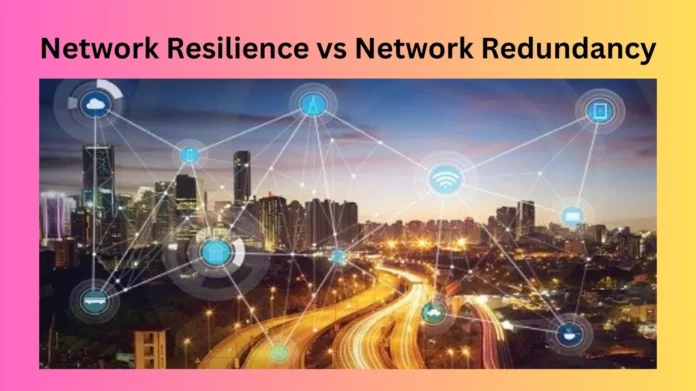In the grand orchestra of modern business operations, the harmony of data flow plays a critical role in the performance of every enterprise. Within this intricate symphony, two concepts often misunderstood yet crucial to the music’s continuity are network resilience and network redundancy. These elements, while related, play distinct roles in the composition of a reliable business internet service. To fully appreciate their importance, one must delve into the nuances of these concepts, understanding not only their definitions but also the unique contributions each makes to the orchestration of a fault-tolerant and robust digital infrastructure.
The Foundations of the Symphony: Understanding Network Redundancy
Imagine, if you will, a choir within our grand symphony, where each voice contributes to the richness of the performance. Network redundancy is akin to having backup singers ready to step in seamlessly should a lead vocalist falter. In technical terms, redundancy refers to the duplication of critical components or functions of a network to increase reliability through the presence of backup resources. It’s the creation of alternative paths for data flow, ensuring that if one pathway is blocked or fails, another can carry the melody without missing a beat.
Network Resilience: The Ability to Adapt and Recover
As our symphony progresses, unexpected challenges arise. A resilient network behaves like a skilled conductor, capable of adapting the performance in real-time to overcome disruptions. Network resilience is about the overall ability of the network to maintain an acceptable level of service in the face of faults and challenges to normal operation. It’s not merely about having backups but involves designing the network with the flexibility to dynamically reroute traffic, adapt to changing conditions, and recover swiftly from any interruptions, ensuring the music plays on, uninterrupted.
The Interplay Between Redundancy and Resilience
To understand the relationship between network redundancy and resilience, consider a scenario where a sudden storm disrupts the symphony’s performance. Redundancy is the presence of additional musicians who can immediately fill in, ensuring the music continues flawlessly. However, resilience is the conductor’s ability to quickly adapt the performance, perhaps changing the arrangement on the fly to suit the remaining ensemble’s strengths until the storm passes.
In a business context, redundancy ensures that backup systems are in place, such as duplicate servers, alternative data paths, or even whole data centers. Resilience, however, refers to the broader strategy that includes not only these backups but also the procedures, policies, and software capabilities that allow a network to adjust and recover from disruptions, be they cyberattacks, hardware failures, or human errors.
Why Your Business Needs Both
Relying solely on network redundancy is like having backup singers without a conductor capable of adapting the performance. Similarly, a resilient network strategy that lacks sufficient redundancy measures is akin to a conductor without enough musicians to sustain the performance through challenges. For a business, the absence of either component can lead to disruptions in service, potentially resulting in lost revenue, diminished customer trust, and operational inefficiencies.
Incorporating both redundancy and resilience into your business internet service design ensures a robust defense against disruptions. Redundancy provides the immediate backup systems necessary to maintain operations, while resilience offers the adaptive strategies and capabilities to manage and recover from unforeseen challenges effectively.
Composing a Masterpiece: Practical Steps for Businesses
- Assessment and Planning: Begin with a comprehensive assessment of your network’s current capabilities and identify potential vulnerabilities. Planning should involve both redundancy (identifying critical components and ensuring backups are in place) and resilience (developing strategies for dynamic response to disruptions).
- Implementation of Redundant Systems: Invest in redundant hardware, software, and pathways. This includes having multiple internet connections, duplicate key hardware components, and cloud-based backups.
- Development of Adaptive Strategies: Implement software-defined networking (SDN) and network function virtualization (NFV) to enhance the network’s adaptability. Develop clear policies and procedures for responding to different types of network disruptions.
- Continuous Testing and Optimization: Regularly test both the redundancy systems and resilience strategies to identify any weaknesses or areas for improvement. This should include simulations of various failure scenarios.
- Training and Awareness: Ensure that all relevant personnel are trained on the network’s resilience strategies and understand their roles in maintaining network continuity.
Conclusion: The Harmony of Digital Continuity
The symphony of a business’s operations relies heavily on the harmony between network redundancy and resilience. Together, they create a composition that ensures not only the continuity of data flow but also the ability to adapt and thrive amidst the cacophony of digital disruptions. As businesses continue to navigate the complexities of the digital landscape, understanding and implementing both concepts will be critical in maintaining the performance and reliability of their operations, allowing the music of commerce to play on without interruption.















